On a safari in Kenya, you'll discover a number of emblematic reserves and natural parks, including Amboseli and Tsavo. But among the country's sixty or so parks, if there's one place you can't afford to miss, it's the Maasai Mara National Reserve, also written Masai Mara. This vast territory of 583 square miles of fertile plains, savannah, mountains and forests (1,510 km²) is the country's most famous and most visited reserve. It is best-known for being the site of the Great Migration of wildebeests and zebras.
What is there to see in the park? How to get there? Where to sleep in the Maasai Mara reserve? In this guide, you'll find everything you need to know to plan your safari in the Maasai Mara National Reserve!
Maasai Mara: a must for a safari in Kenya
You're probably familiar with the Serengeti National Park – an immense area of almost 5,792 square miles in northern Tanzania (15,000 km²). It is notably home to over 4 million animals.
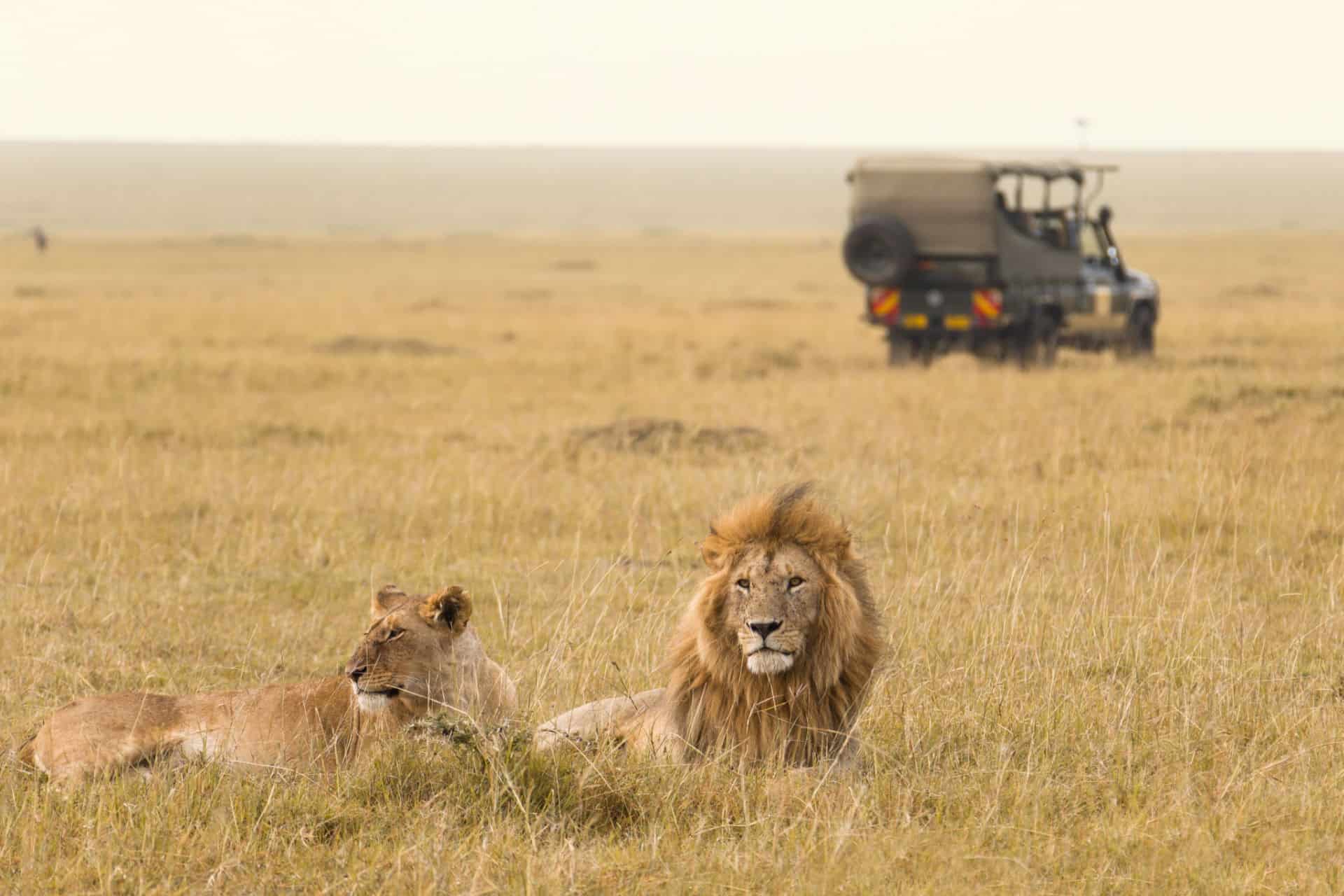
The Maasai Mara Reserve is in fact the natural extension of this park, but located on Kenyan territory, some 155 miles from Nairobi in the south-west of the country (250 km). It really is a must-see if you were wondering what to do in Kenya! 😁
The main reason why this nature reserve is so popular is that it is one of the richest and most impressive ecosystems on the African continent. But it's also one of the places where you can enjoy the greatest sense of freedom on safari, with ideal conditions for animal observation and simply stunning scenery.
What animals can be seen in the Maasai Mara?
The Maasai Mara National Reserve is one of the few parks in the country where all the animals of the African Big Five can be observed. These are the five iconic African land mammals: lion, leopard, elephant, buffalo and rhinoceros.
Many other animal species live on this territory, obviously, either year-round or only during the dry season. You will be able to observe many of Kenya’s animals – herbivores and birds,as well as a wide variety of carnivores and reptiles.
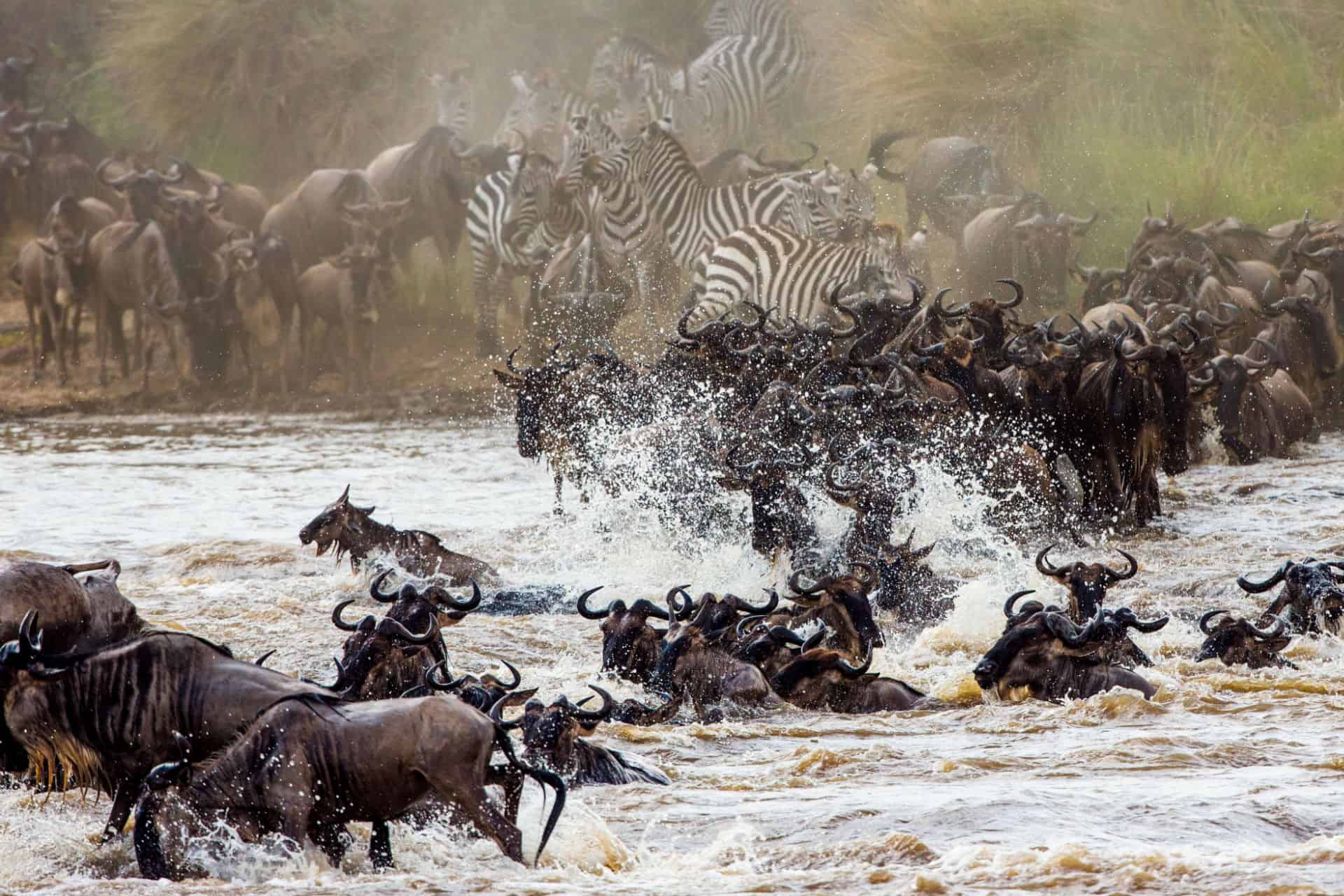
Among the herbivores, you'll see antelopes, warthogs and gazelles. Many other carnivores are also present in the Kenyan steppes: cheetahs, jackals, hyenas, servals...
You will also be able to observe a large number of birds (vultures, flamingos, hornbills, eagles...) as well as reptiles (crocodiles, tortoises, monitor lizards, snakes...).
The Great Migration in the Masai Mara
The Serengeti and Maasai Mara are world-famous for a unique natural phenomenon: the great herbivore migration. Every year, millions of herbivores (mainly wildebeests, with herds of zebras and gazelles) make the journey from south to north, in search of water and food during the dry season.
All these animals gather in the vast Serengeti Park after the rainy season (between December and March), and the migration begins in April, when they head westwards towards the Serengeti.
This huge migration is of course not without danger for the herbivores, who are patiently followed by numerous land and water predators. From July onwards, the herds gather on the banks of the Mara River, which marks the border between the Serengeti and the Masai Mara Reserve. This river, infested with crocodiles, is the last great danger of this perilous journey.

Watching the herds cross is one of the most impressive and fascinating sights you'll see on an African safari. No less than 1,500,000 wildebeests and 300,000 zebras travel the 621 miles between the southern Serengeti Park and the Masai Mara over the course of a few months (1,000 km).
The animals then stay in Kenya from July to October, before heading south again.
Activities in the Maasai Mara park
An unforgettable safari in this national reserve is far from the only thing you can experience there. You'll also have the opportunity to enjoy many other memorable experiences.
Visit a Masai village
The Masai Mara is classified as a national reserve, rather than a park, because this territory is still inhabited by the Masai (or Maasai), who herd their cattle here. These nomadic people gave their name to the reserve. They are found mainly in Kenya and Tanzania, and you will be able to immerse yourself in the culture of these herders and warriors, who still manage to maintain their traditions while taking part in the society, economy and politics of their region.
Several Maasai villages (known as "Manyattas") are located in the Masai Mara territory, and a few can be visited. The inhabitants of these villages, although very attached to their traditions and customs, are perfectly accustomed to the presence of tourists, and are often delighted to share their way of life for a day. In fact, the money they earn from these visits is essential to maintaining the strength and autonomy of their community.
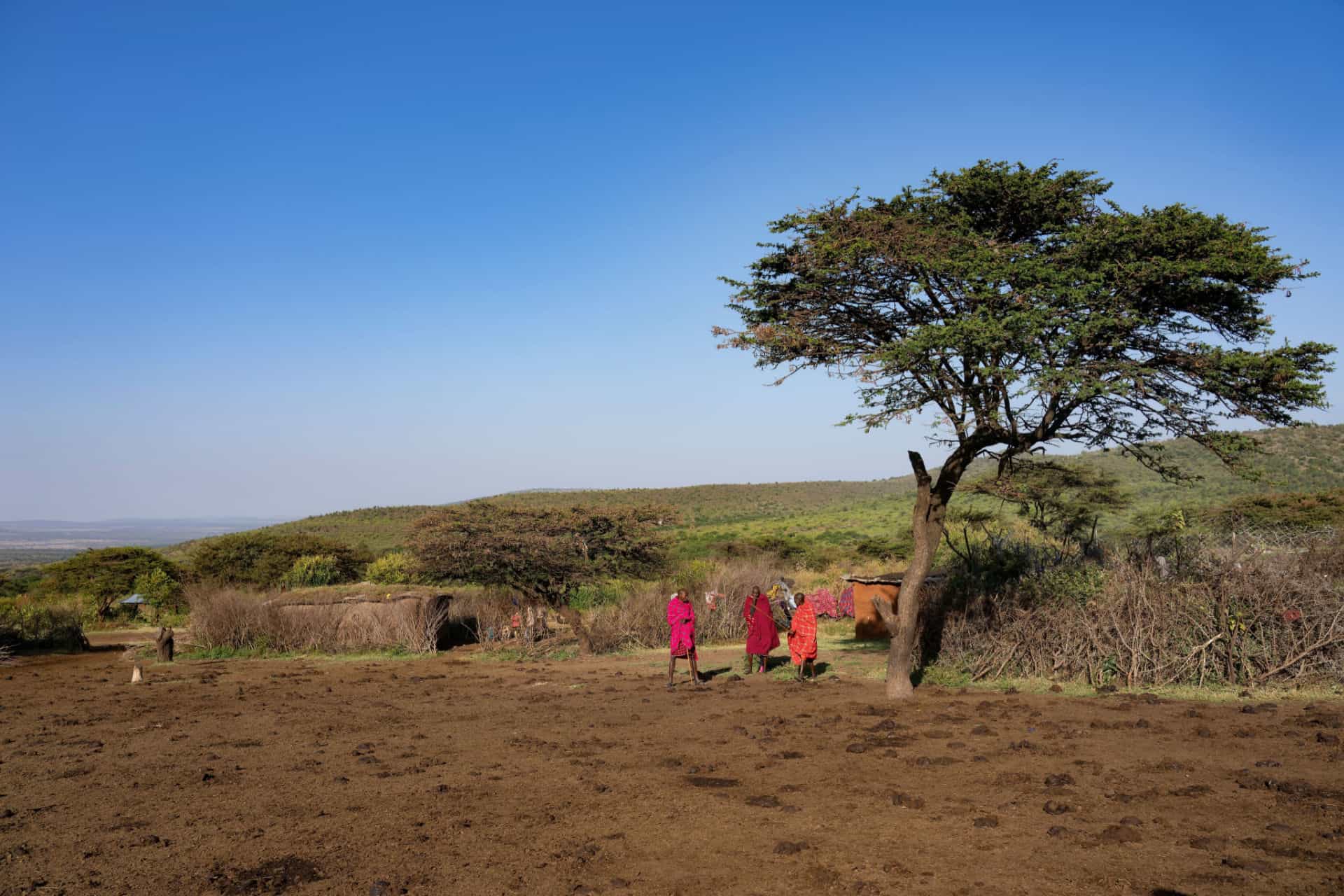
During a visit to a Maasai village, you can watch traditional dances and songs, visit the huts, take photos and even buy some of the local crafts (necklace, bracelet, shield...) to bring home as a souvenir.
Some members of the Maasai tribes also offer their services as guides on Masai Mara safaris.
The Mara Naboisho Conservancies
Along the northern border of the Masai Mara are a number of wildlife conservation areas. These areas are managed by the Maasai themselves, and are home to a number of camps, some very simple, others much more luxurious. Only those staying in these camps are allowed to visit these areas. The landscapes are less emblematic than those you'll discover in the reserve, but here, unlike in the Masai Mara, hiking and walking safaris are permitted, even off-road and at night.
Flying over the Masai Mara in a hot-air balloon
To make your trip even more memorable, you can choose to discover the reserve from the air in a hot-air balloon. Several local agencies offer hot-air balloon flights over the Masai Mara, for around $440 per person.
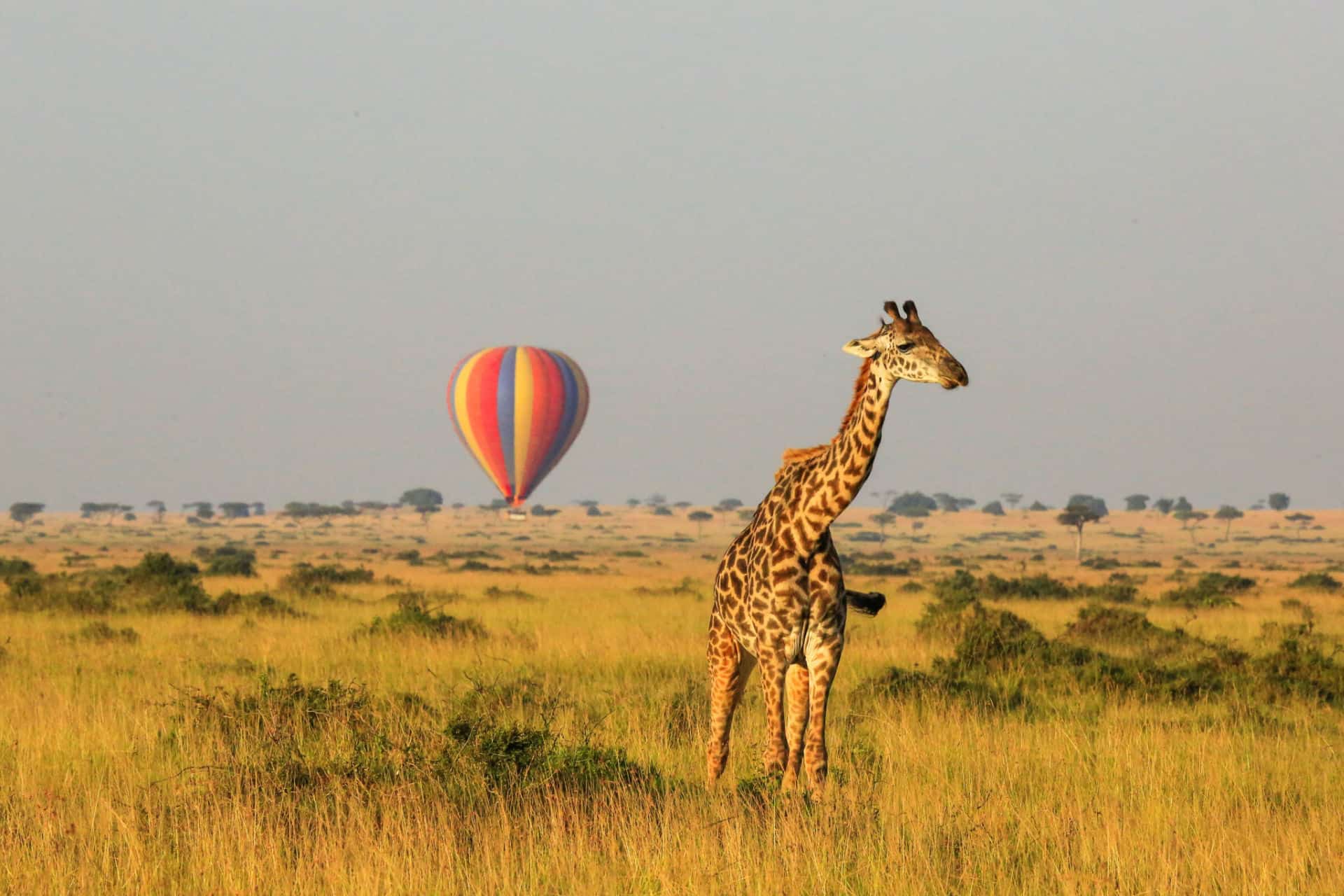
Standard safaris are expensive enough, and a hot-air balloon flight is an activity that is naturally quite pricey. But if your budget allows, you definitely won't regret the flight.
Departures are usually very early in the morning, so that travelers can enjoy the sunrise from the balloon. During a flight lasting just over an hour, you'll be able to admire the beauty of the region and see many animals in their natural environment, all from a whole new angle.
Breakfast in the bush is provided after landing.
When to go on safari in the Masai Mara?
The reserve enjoys a favorable climate, thanks in large part to the mountain range that acts as a natural boundary to the north, ensuring relatively frequent rainfall even during the dry season.
As a result, the reserve is an ideal place for herbivores to feed on the vegetation, and their presence naturally attracts predators. So you can enjoy a Masai Mara safari all year round, even if the taller, denser vegetation may hamper visibility a little between January and March.
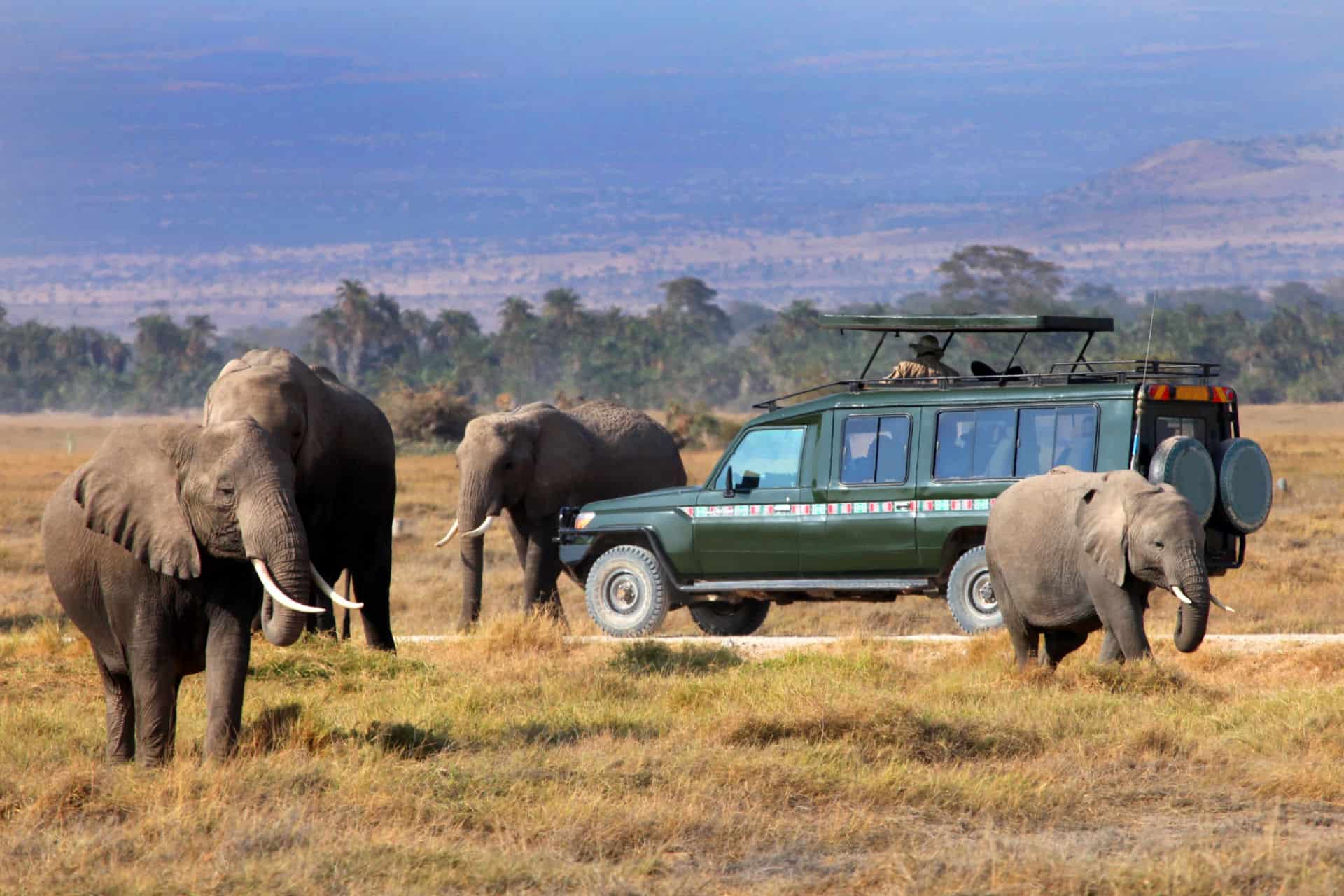
The best time to visit the Maasai Mara is, of course, at the end of the Great Migration, when all the animals cross the Mara River before staying in the park for a few months, from July to October. To find out more, you can read my article on when to go to Kenya!
Where to sleep when visiting the Masai Mara?
There are plenty of options for spending the night in or near the Maasai Mara reserve. Prices are relatively high for on-site accommodation (though the view is well worth it!), and you'll need to travel a little further away to find more affordable accommodation.
Here are the different types of accommodation you'll find in the Masai Mara:
Lodges: very luxurious, well-equipped tents, bungalows or even rooms similar to those found in classic hotels. These are the most comfortable, upscale accommodations you'll find in Kenya's reserves and parks. Lodges are often located on large, well-kept plots of land, which may be in or around a reserve. Prices for lodges vary greatly according to their location and level of service.
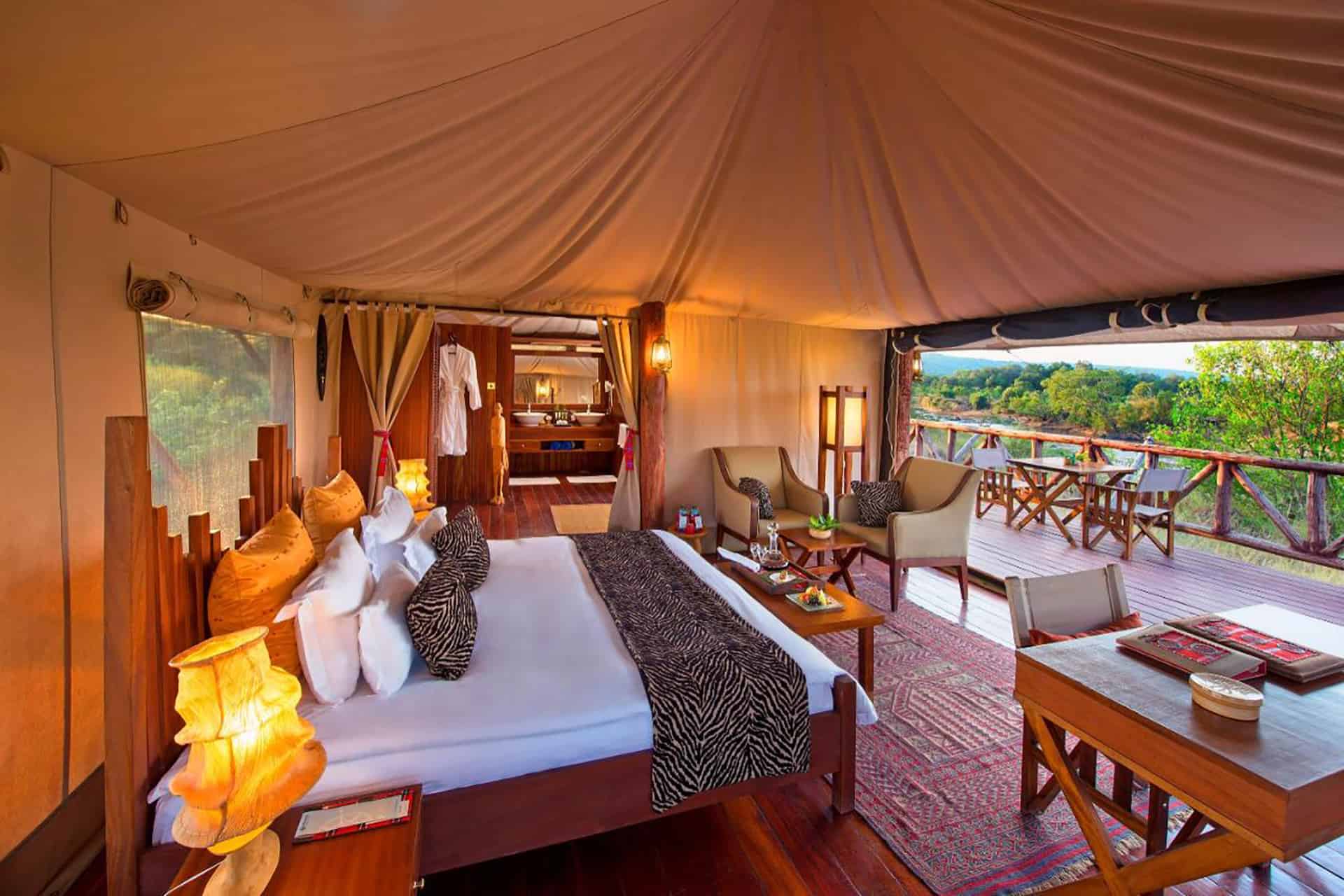
- Hotels are only ever found outside national parks and reserves. Generally speaking, these establishments are quite comfortable and more affordable, but require you to leave the reserve each day and therefore pay a higher entrance fee each time.
- Camps are places where you can find safari tents. These are large, spacious tents in which one can stand upright without being cramped, and which most of the time have a floor and facilities worthy of the best campsites (bathroom, swimming pool, restaurant...). They are often the best compromise between comfort and closeness to nature, but prices are quite high (sometimes even higher than lodges prices).
- Campsites are more spartan in their comfort, suitable for adventurers wishing to sleep close to the wilderness, or for those on a tighter budget. But don’t worry, in most cases, these areas are equipped with shower and toilet facilities.
How to get to the Maasai Mara reserve?
If you're still unsure about how to get to Kenya, you should know that though the reserve is relatively accessible, there are only two ways to get there:
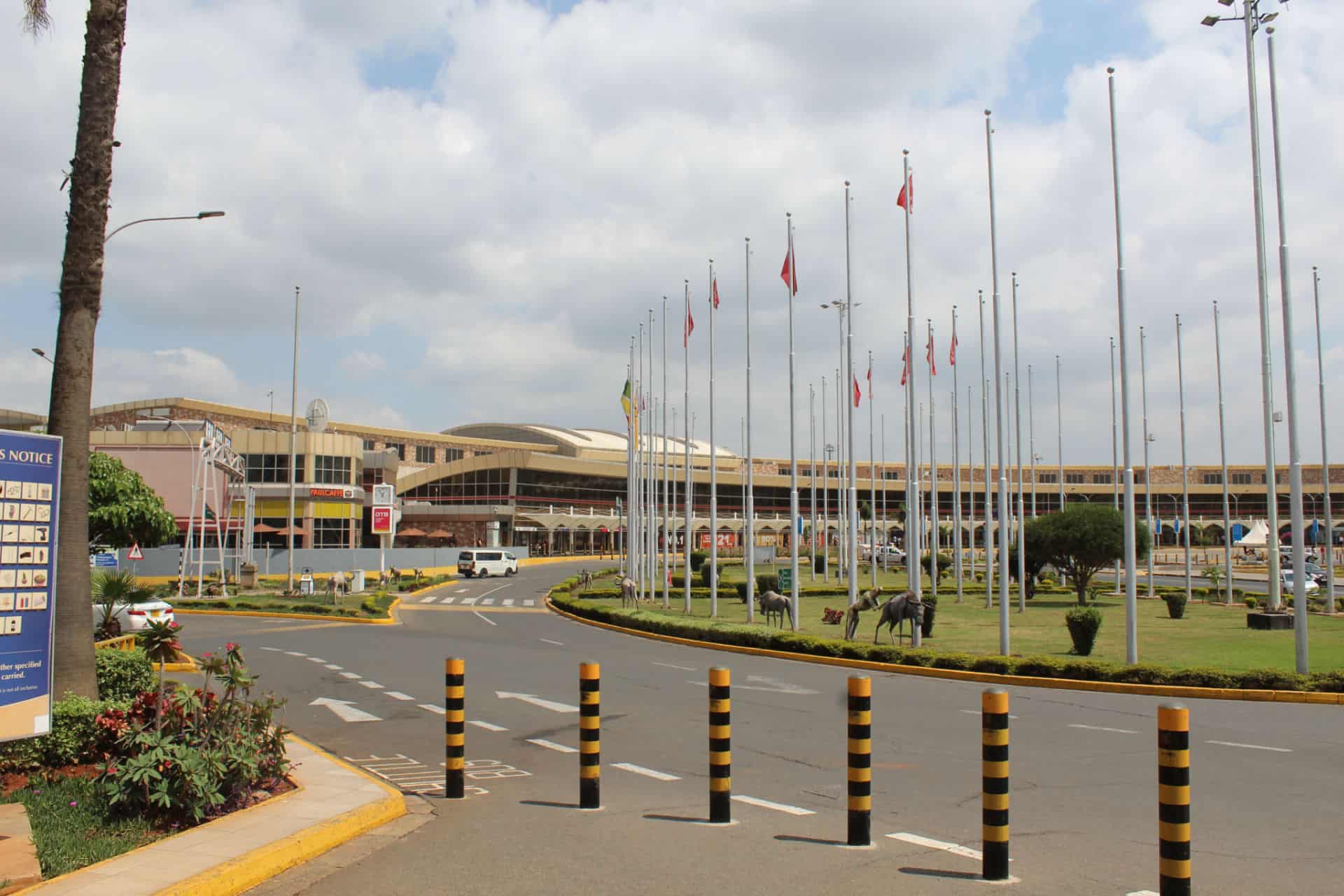
- By plane, from Nairobi or Mombasa, where the two airports offering domestic flights to the Maasai Mara are located. From the capital Nairobi, the journey takes just over an hour, and about two hours from Mombasa. Tickets are far from cheap, costing between $220 and $550 depending on the season.
- By car, with a journey of around 6 hours from Nairobi, on roads that are sometimes quite difficult to negotiate and require the use of an all-terrain vehicle. Unfortunately, there is no direct bus service to any of the reserve's entrances. It is possible to travel from Nairobi to Nyamira or Sirare by bus, but this requires a detour and the rest of the journey (around 3 hours' drive) can only be made by car.
Visit the Maasai Mara: prices
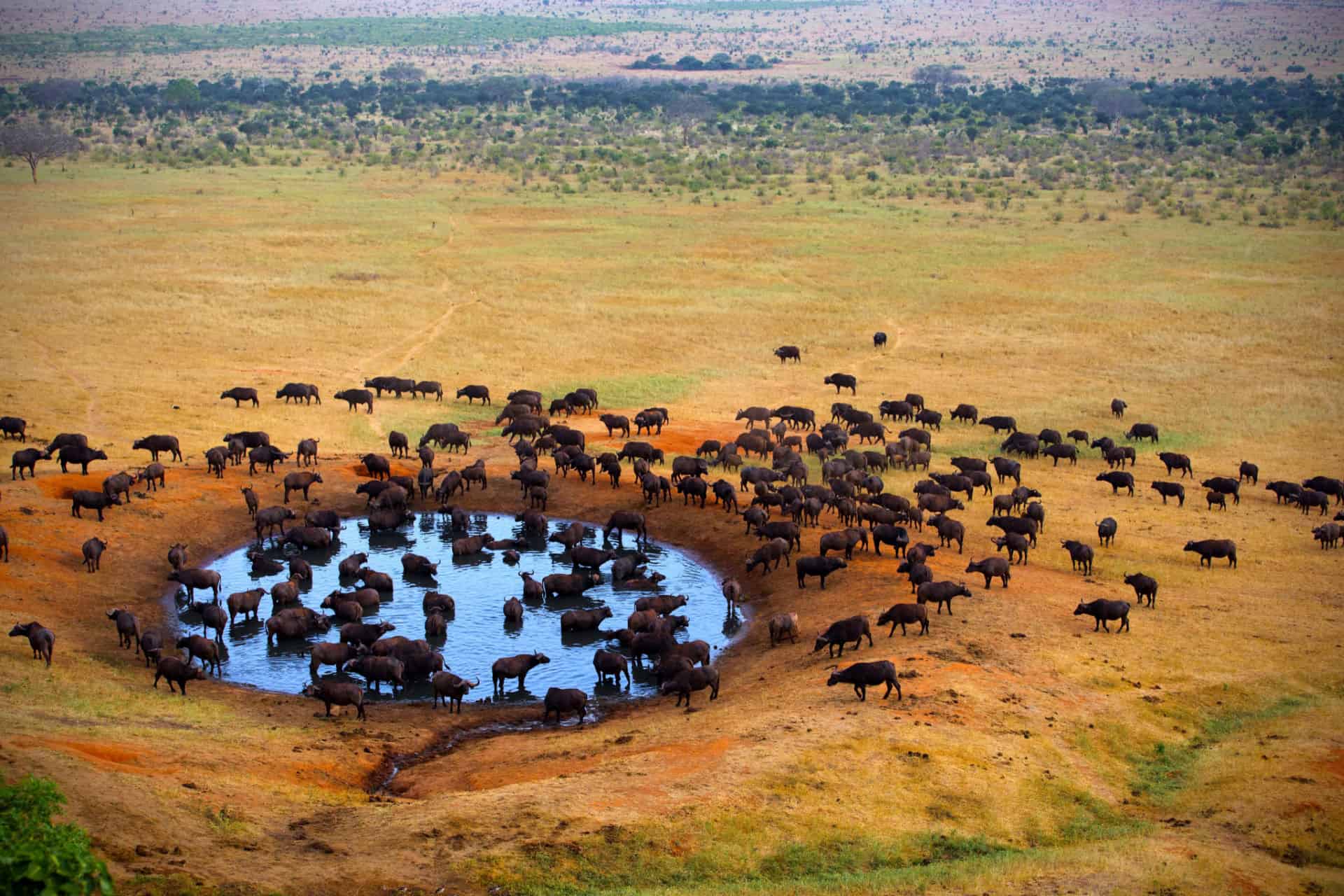
The price of a safari can vary wildly depending on a number of criteria, but the price of the entrance ticket is fixed. This ticket only gives entrance to the reserve, and does not include the rental of a vehicle or the services of a guide, both of which will be mandatory during your visit. If you book your safari through a local agency, this entrance ticket will be included in your package. Otherwise, you'll have to buy it on arrival at one of the reserve's six entrances.
Entrance fee to visit the Maasai Mara National Reserve:
- $80 per person per day (adult or child);
- $70 per person per day (adult or child) for visitors staying overnight in a camp or lodge inside the reserve.
Practical information, regulations and safety
A nature reserve is not a zoo or a wildlife park: it's a place where safety, the well-being of the animals and respect for their wild lifestyle are paramount. A number of rules must be observed on safari:
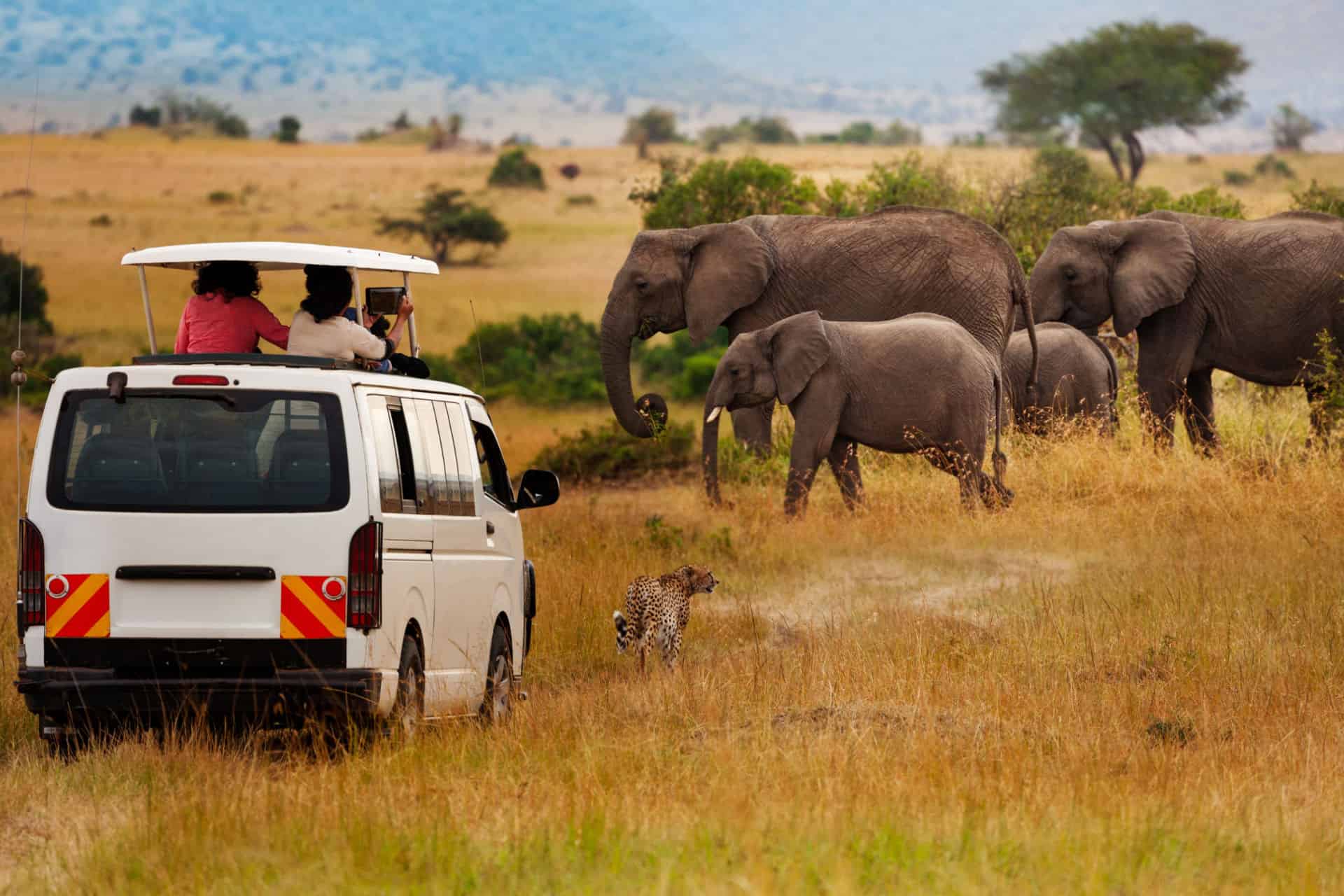
- Vehicles may travel at up to 31 mph on the tracks (50 km/h), and from 6 a.m. to 7 p.m. only.
- Animals must not be fed.
- Off-roading is only permitted away from waterholes, and it is forbidden to approach within 82 feet of the animals (25 m).
- Groups of 5 or more vehicles are not allowed near the animals.
- Animals' peace and quiet is paramount, so please limit noise pollution (engine, voice, radio...) during observation.
- It is strictly forbidden to leave the vehicle, except in protected areas such as picnic areas. Even then, it is forbidden to walk away from the vehicle.
- Picking is forbidden, especially because some plant species can be dangerous.
- Respect for nature is essential, and it's totally forbidden to leave litter lying around.
- If you are staying overnight in the reserve, remember to protect yourself from mosquitoes by wearing full-length clothing and using mosquito repellent and mosquito netting.
I hope you find this information useful! And to continue preparing for your stay, you can also check out my other article on vaccinations for traveling in Kenya 🙂
0 Comments